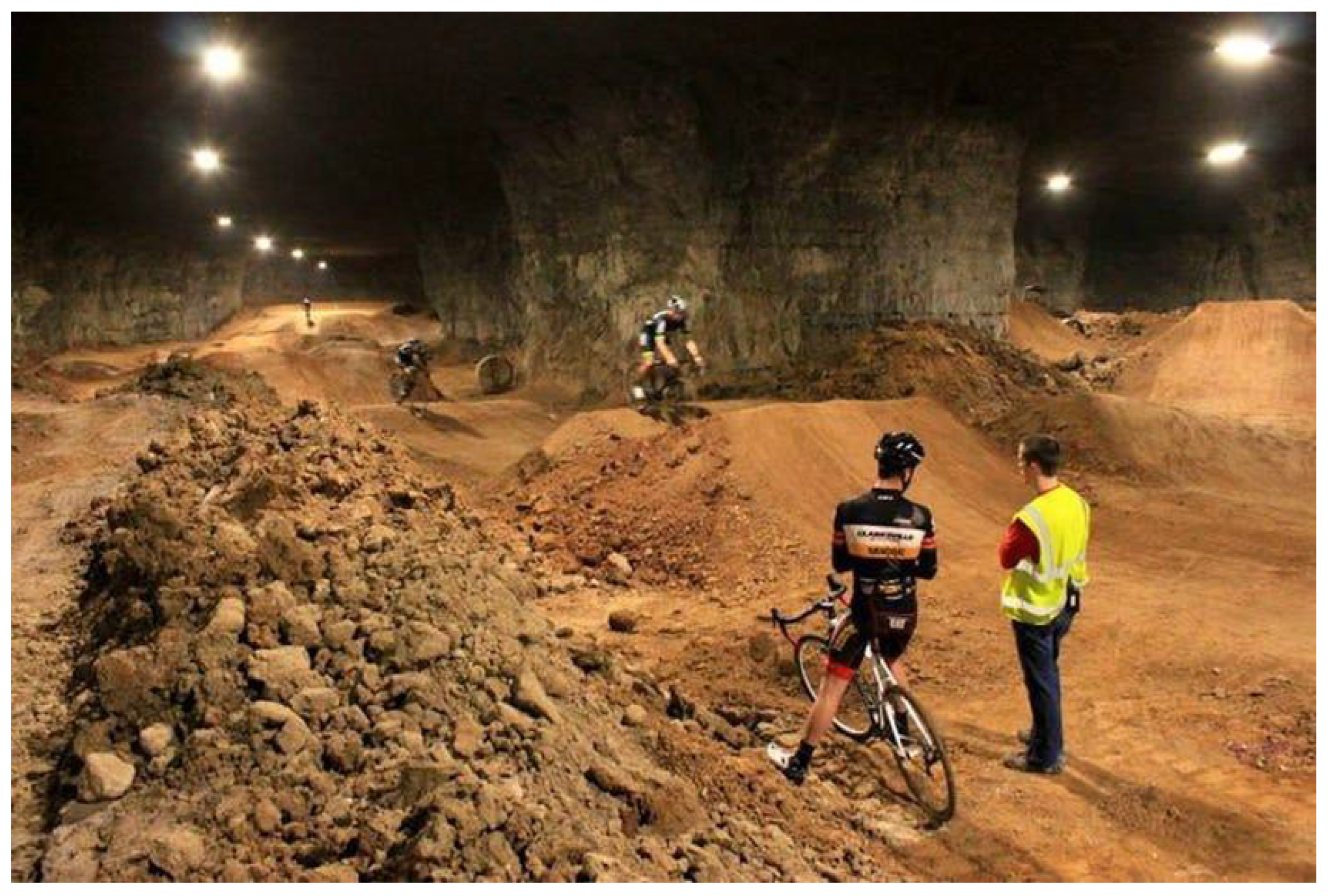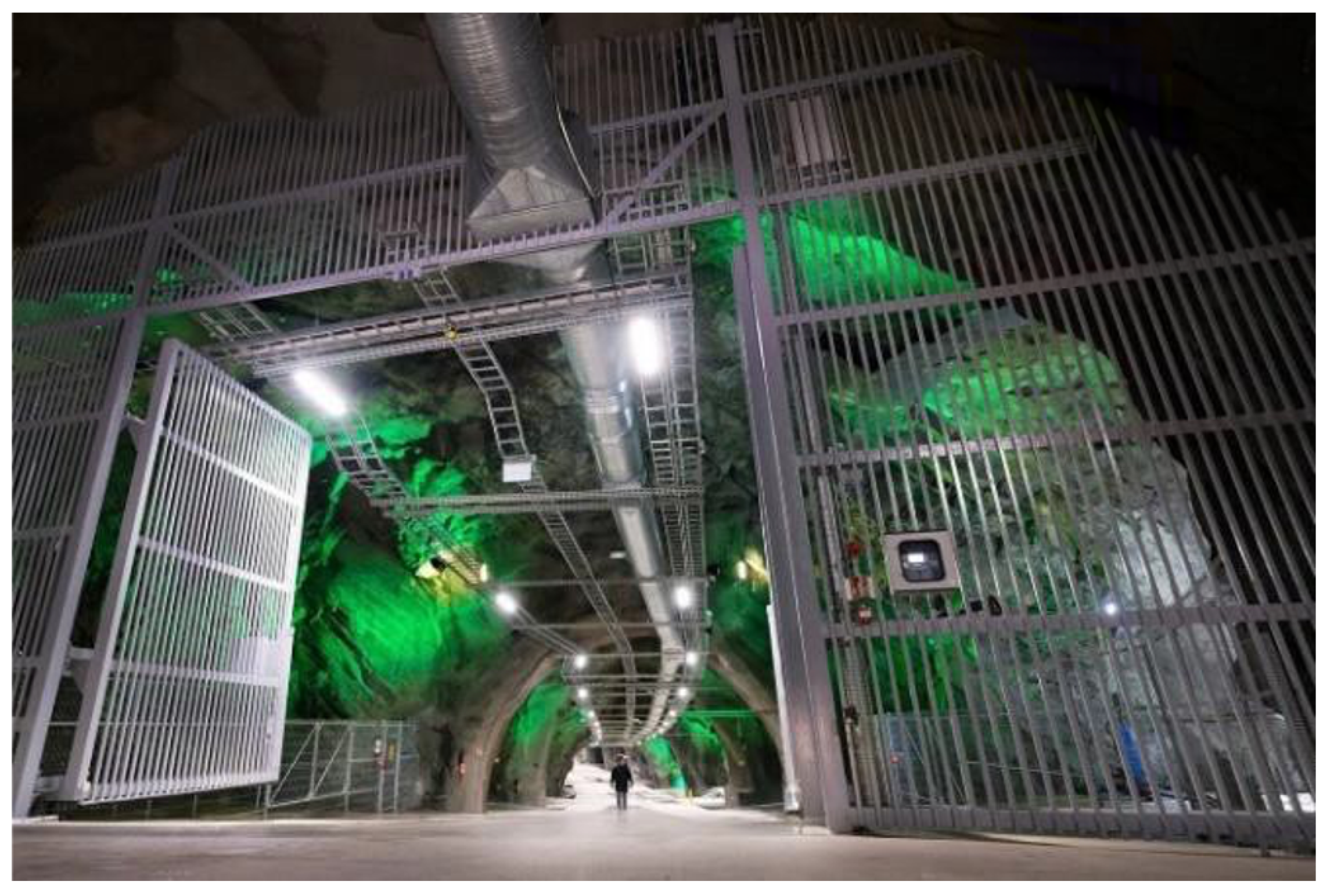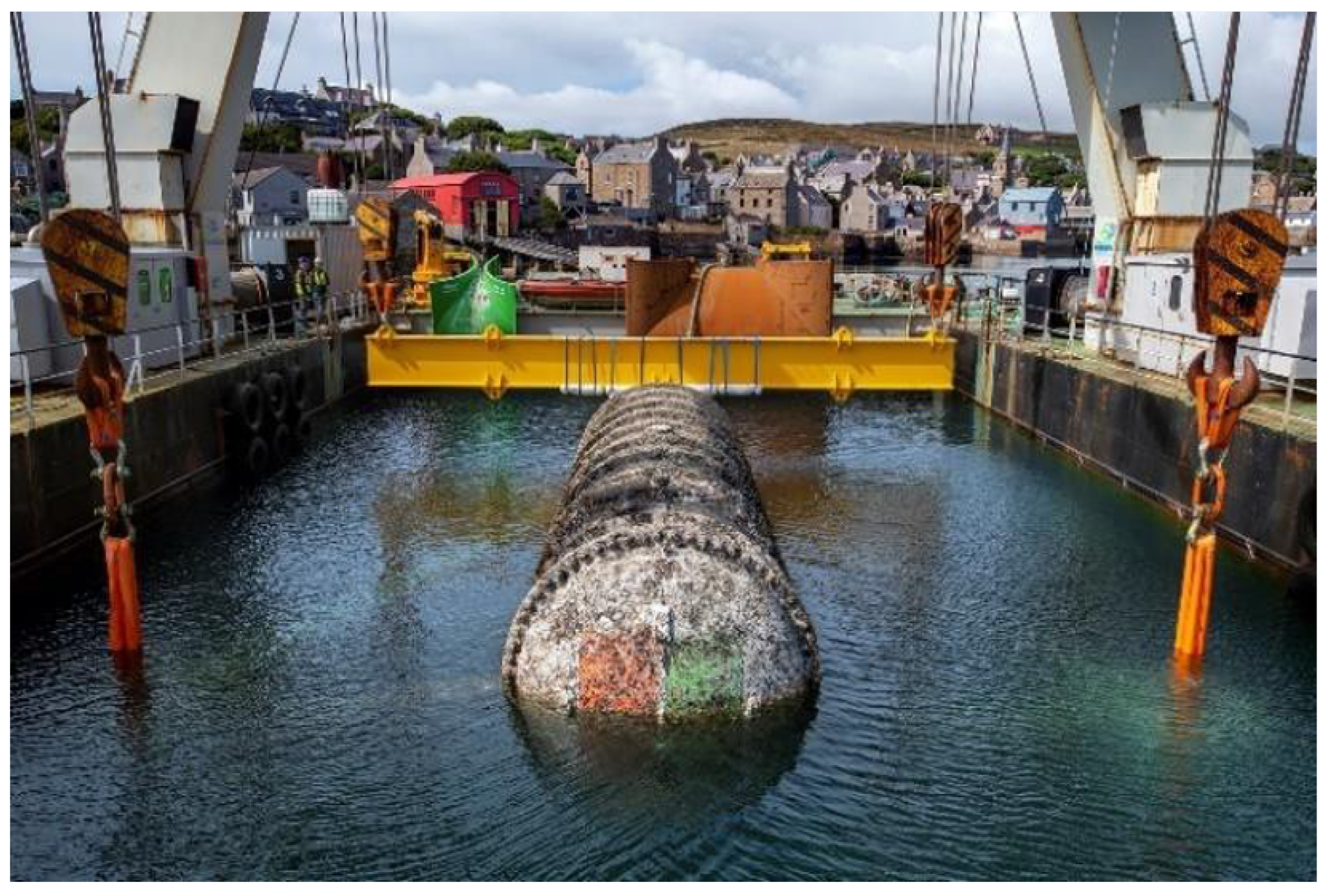
| Version | Summary | Created by | Modification | Content Size | Created at | Operation |
|---|---|---|---|---|---|---|
| 1 | Hajime Ikeda | -- | 2403 | 2023-12-05 00:58:45 | | | |
| 2 | Peter Tang | Meta information modification | 2403 | 2023-12-05 02:42:52 | | |
Video Upload Options
Mining activities often deem mine sites as temporary, leading to their eventual reclamation, rehabilitation, or abandonment. The abandoned mine sites can be reimagined as strategic assets, thus providing economic benefits while adhering to critical data center infrastructure standards.
1. Introduction
2. Smart Mining
3. Digital Twin

-
Real-time monitoring and control: With IoT, users can access the digital model of a physical entity or process from virtually anywhere.
-
Enhanced safety and efficiency: Automated monitoring of remote or inaccessible areas.
-
Predictive maintenance and scheduling: AI-driven solutions detect potential system faults, enabling pre-emptive maintenance and avoiding economic losses or safety hazards.
-
Scenario and risk assessment: Simulations with varied input parameters allow the prediction and pre-emptive addressing of unforeseen scenarios.
-
Improved documentation: Immediate access to real-time information enhances transparency for stakeholders.
-
Streamlined operations: Data-driven decision making, bolstered by advanced analytics and interconnected intelligence networks, fosters synergies and collaborative efforts, boosting productivity.
4. Ventilation Simulation Programs
5. Integrating Simulation Programs with Digital Twins
6. Re-Purposing of Underground Spaces



|
Function |
Details |
Depth |
Mine Name |
|---|---|---|---|
|
Underground laboratory |
Stawell underground physics lab Kamioka underground laboratory (Japan, 1982) |
−700 m −1000 m |
Stawell Victoria gold mine Kamioka Mozumi arsenic mine |
|
Waste disposal Geothermal exploration Industrial tourism Healthcare |
Asse II mine (Germany, 1967) Underground hot water circulatory system (Canada, 1980s) Kailuan national mine park (China, 2008) Solotvyno’s Allergological Hospital (Ukraine, 1965) |
−750 m −2000 m −410 m −300 m |
Asse salt mine Hot spring coal slope mine Tangshan coal mine Solotvyno’s salt mine |
|
Leisure and community |
Louisville Mega Cavern—underground bike park (USA) |
−30 m |
Mega cavern former limestone mine |
7. Data Centers



References
- Fields, S. The earth’s open wound: Abandoned and orphaned mines. Environ. Health Perspect. 2003, 111, A154.
- World Bank. Mine Closure: A Toolbox for Governments; Technical Report; World Bank: Washington, DC, USA, 2021.
- Wynn, M.; Lam, C. Digitalisation and IT Strategy in the Hospitality Industry. Systems 2023, 11, 501.
- International Council of Mining and Metals ICMM. Closure Maturity Framework Tool for Closure User Guide; International Council of Mining and Metals ICMM: London, UK, 2020.
- Likar, J.; Grøv, E. Underground citing of nuclear stations. In Underground—The Way to the Future, Proceedings of the World Tunnel Congress, WTC 2013, Edgbaston, Birmingham, UK, 23 June 2013; CRC Press: Boca Raton, FL, USA, 2013; pp. 27–34.
- Holocombe, S.; Keenan, J. Mining as a Temporary Land Use Scoping Project: Transitions and Repurposing; Technical Report; The University of Queensland: Brisbane, Australia, 2020.
- Ikeda, H.; Kawamura, Y.; Tungol, Z.P.L.; Molidi, M.A.; Jang, H. Implementation and Verification of a Wi-Fi Ad Hoc Communication System in an Underground Mine Environment. J. Min. Sci. 2019, 55, 505–514.
- Ikeda, H.; Sato, T.; Yoshino, K.; Toriya, H.; Jang, H.; Adachi, T.; Kitahara, I.; Kawamura, Y. Deep Learning-Based Estimation of Muckpile Fragmentation Using Simulated 3D Point Cloud Data. Appl. Sci. 2023, 13, 10985.
- Ikeda, H.; Malgazhdar, D.; Shionoiri, T.; Sinaice, B.B.; Adachi, T.; Kawamura, Y. Development of a Communication System for Underground Mining Informatization Leading to Smart Mining: A Comparison of Wi-Fi Ad Hoc and Wi-Fi Direct. J. Soc. Mater. Eng. Resour. Jpn. 2022, 25, 218–223.
- Ikeda, H.; Kawamura, Y.; Jang, H.; Mokhtar, N.E.B.; Yokokura, J.; Tungol, Z.P.L. Development of an Underground In-Situ Stress Monitoring System for Mining Safety Using Multi Sensor Cell and Wi-Fi Direct Technology. In Proceedings of the 28th International Symposium on Mine Planning and Equipment Selection, Perth, Australia, 2–4 December 2019; pp. 236–244.
- Ikeda, H.; Kolade, O.; Mahboob, M.A.; Cawood, F.T.; Kawamura, Y. Communication of sensor data in underground mining environments: An evaluation of wireless signal quality over distance. Mining 2021, 1, 211–223.
- Bluhm, S.J.; von Glehn, F.H.; Marx, W.M.; Biffi, M. VUMA mine ventilation software. J. Mine Vent. Soc. S. Afr. 2001, 54, 65–72.
- Webber-Youngman, R.C.W. An integrated approach towards the optimisation of ventilation, air cooling and pumping requirements for hot mines. In Proceedings of the Australasian Institute of Mining and Metallurgy Publication Series, Melbourne, Australia, 19–21 September 2005; pp. 75–84.
- Sasmito, A.P.; Kurnia, J.C.; Birgersson, E.; Mujumdar, A.S. Computational evaluation of thermal management strategies in an underground mine. Appl. Therm. Eng. 2015, 90, 1144–1150.
- Dahmen, U.; Rossmann, J. Experimentable Digital Twins for a Modeling and Simulation-based Engineering Approach. In Proceedings of the 4th IEEE International Symposium on Systems Engineering, ISSE 2018—Proceedings, Roma, Italy, 1–3 October 2018.
- Sishi, M.; Telukdarie, A. Implementation of industry 4.0 technologies in the mining industry—A case study. Int. J. Min. Miner. Eng. 2020, 11, 1–22.
- Cheskidov, V.V.; Lipina, A.V.; Melnichenko, I.A. Integrated monitoring of engineering structures in mining. Eurasian Min. 2018, 2018, 18–21.
- Jacobs, D.R. Developing a Digital Twin for Addressing Complex Mine Ventilation Problems. Ph.D. Thesis, North-West University, Potchefstroom, South Africa, 2021.
- Nie, X.; Wei, X.; Li, X.; Lu, C. Heat Treatment and Ventilation Optimization in a Deep Mine. Adv. Civ. Eng. 2018, 2018, 1529490.
- Wagner, H. The management of heat flow in deep mines. Management von Wärmeströmen in tiefliegenden Bergwerken. Geomech. Tunn. 2010, 3, 609–621.
- de Villiers, D.J.; Mathews, M.J.; Maré, P.; Kleingeld, M.; Arndt, D. Evaluating the impact of auxiliary fan practices on localised subsurface ventilation. Int. J. Min. Sci. Technol. 2019, 29, 933–941.
- Schutte, A.J.; Kleingeld, M. An integrated energy efficiency strategy for deep mine ventilation and refrigeration. In Proceedings of the 2014 International Conference on the Eleventh Industrial and Commercial Use of Energy, Cape Town, South Africa, 19–20 August 2014.
- Lu, Q.; Huang, G.; Ge, Y. Simulation of fire spreading in underground mine based on cellular automata and particle system. In Proceedings of the 2009 International Conference on Industrial Mechatronics and Automation, Changchun, China, 9–12 August 2009; pp. 180–183.
- Danko, G.L. Subsurface flow and transport process model for time dependent mine ventilation simulations. Min. Technol. 2013, 122, 134–144.
- Späth, M.B.; Conlan, O. VUMA: A Visual User Modelling Approach for the Personalisation of Adaptive Systems. Available online: http://kdeg.cs.tcd.ie/ (accessed on 19 November 2023).
- Astrand, M.; Saarinen, K.; Sander-Tavallaey, S. Surrogate models for design and study of underground mine ventilation. In Proceedings of the 2017 22nd IEEE International Conference on Emerging Technologies and Factory Automation (ETFA), Limassol, Cyprus, 12–15 September 2017; pp. 1–8.
- Yang, W.; Yoshida, K.; Takakuwa, S. Digital Twin-Driven Simulation for a Cyber-Physical System in Industry 4.0 Era. In DAAAM International Scientific Book 2017; DAAAM International Vienna: Vienna, Austria, 2017; pp. 227–234.
- Maré, P. Novel Simulations for Energy Management of Mine Cooling Systems. Ph.D. Thesis, North-West University, Potchefstroom, South Africa, 2017.
- Holman, A.M.J.; van Rensburg, J.; Arndt, D. Benefits of site specific simulation models for assessing electrical energy savings potential on mine cooling systems. In Proceedings of the 10th Industrial and Commercial Use of Energy Conference, Cape Town, South Africa, 20–21 August 2013; pp. 1–6.
- Fioroni, M.M.; dos Santos, L.C.A.; Franzese, L.A.G.; Santana, I.R.; Telles, G.D.; Seixas, J.C.; Penna, B.; de Alkmim, G.M. Logistic evaluation of an underground mine using simulation. In Proceedings of the Winter Simulation Conference 2014, Savannah, GA, USA, 7–10 December 2014; pp. 1855–1865.
- Genc, B.; Musingwini, C.; Celik, T. Estimating mine planning software utilization for decision-making strategies in the South African coal mining sector. J. S. Afr. Inst. Min. Metall. 2016, 116, 221–227.
- Manríquez, F.; Pérez, J.; Morales, N. A simulation–optimization framework for short-term underground mine production scheduling. Optim. Eng. 2020, 21, 939–971.
- McPherson, M.J. Subsurface Ventilation and Environmental Engineering; Springer: Dordrecht, The Netherlands, 1993.
- Nel, A.J.H.; Vosloo, J.C.; Mathews, M.J. Evaluating complex mine ventilation operational changes through simulations. J. Energy S. Afr. 2018, 29, 22–32.
- van Antwerpen, H.; Viljoen, D.; van der Meer, W.; Greyling, J. Combined system simulation of cooling and ventilation for the world’s deepest mine. In Proceedings of the Society of Mining and Exploration, Salt Lake City, UT, USA, 23–26 February 2014; pp. 1–10.
- Wei, F.; Fangping, Z.; Huiqing, L. The Use of 3D Simulation System in Mine Ventilation Management. Procedia Eng. 2011, 26, 1370–1379.
- MOUNT10—SWISS FORT KNOX. Available online: https://www.mount10.ch/en/mount10/swiss-fort-knox/ (accessed on 19 November 2023).
- Chandrasekaran, A. Best Practices for Running Containers and Kubernetes in Production; Technical Report G00730344; Gartner: Stamford, CT, USA, 2019.
- Ponemon Institute LLC. Cost of Data Center Outages. 2016. Available online: https://bit.ly/2nrfa3w (accessed on 19 November 2023).
- Homepage—Lefdal Mine Datacenter. Available online: https://www.lefdalmine.com/ (accessed on 19 November 2023).
- Bluebird Underground Data Center Services and Colocation Racks. Available online: https://bluebirdnetwork.com/underground-data-center (accessed on 19 November 2023).
- Microsoft Finds Underwater Datacenters Are Reliable, Practical and Use Energy Sustainably|Innovation Stories. Available online: https://news.microsoft.com/innovation-stories/project-natick-underwater-datacenter/ (accessed on 19 November 2023).
- Zhang, H.; Shao, S.; Xu, H.; Zou, H.; Tian, C. Free cooling of data centers: A review. Renew. Sustain. Energy Rev. 2014, 35, 171–182.
- Paludetto, D.; Lorente, S. Modeling the heat exchanges between a datacenter and neighboring buildings through an underground loop. Renew. Energy 2016, 93, 502–509.




